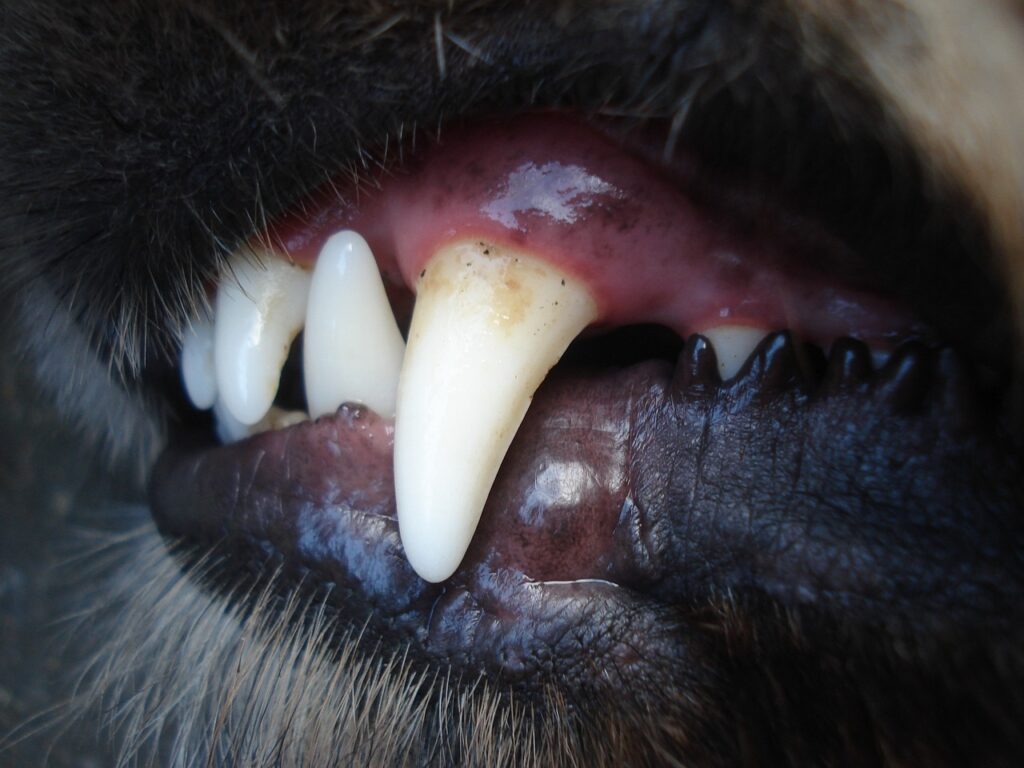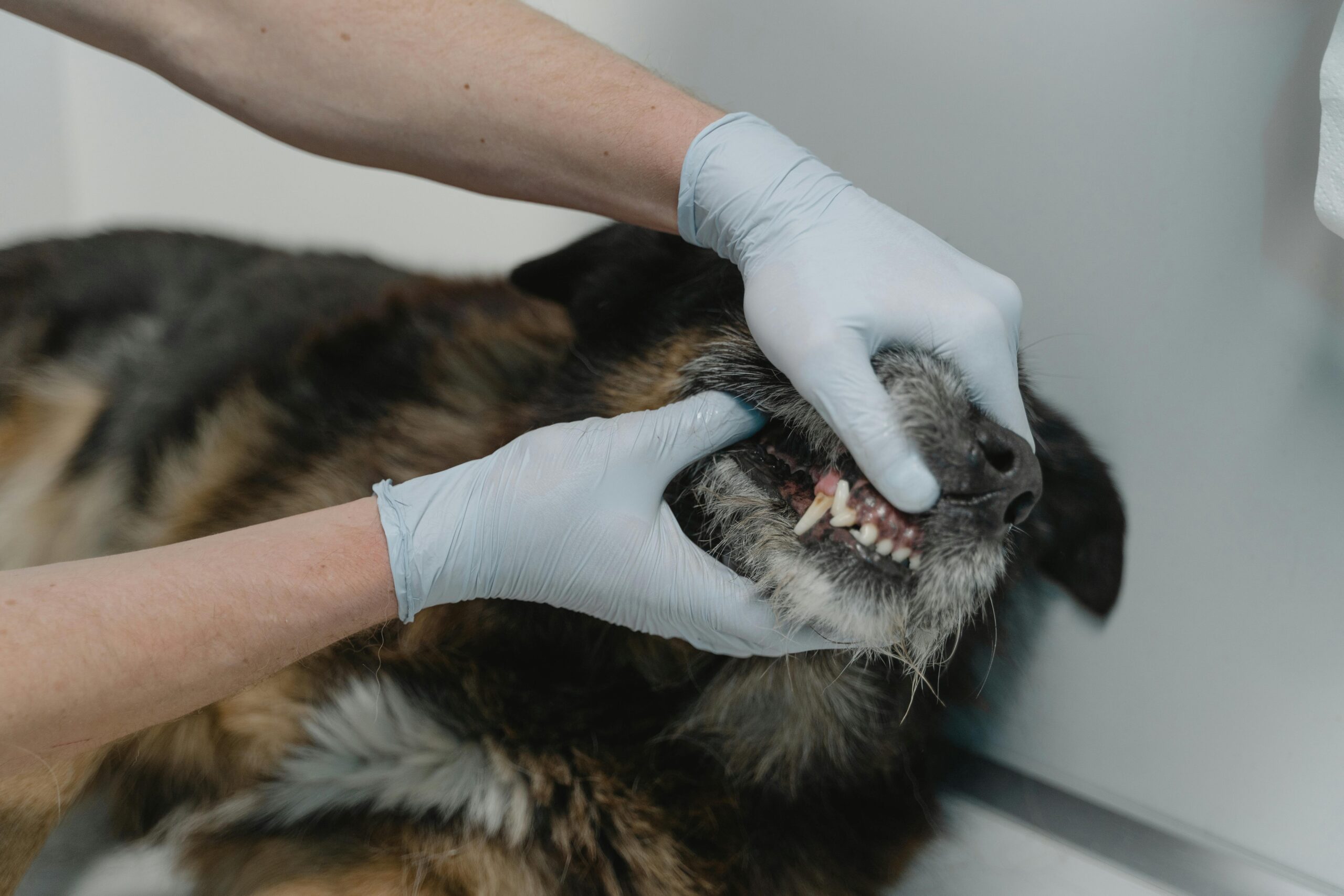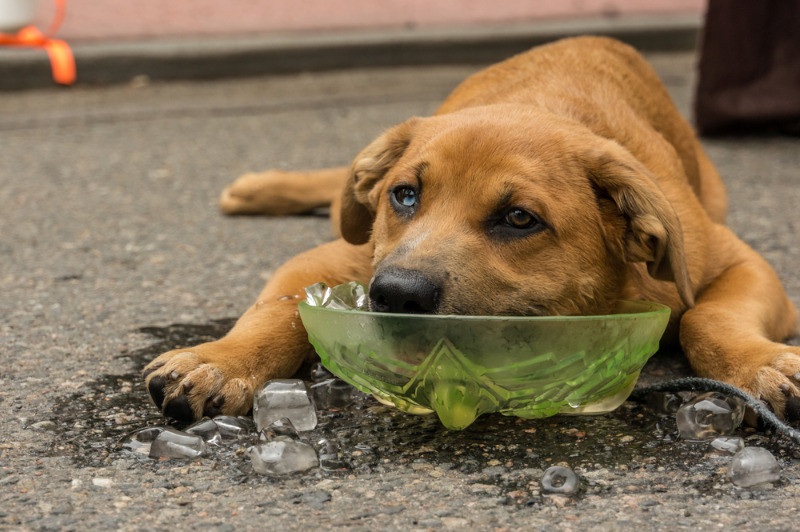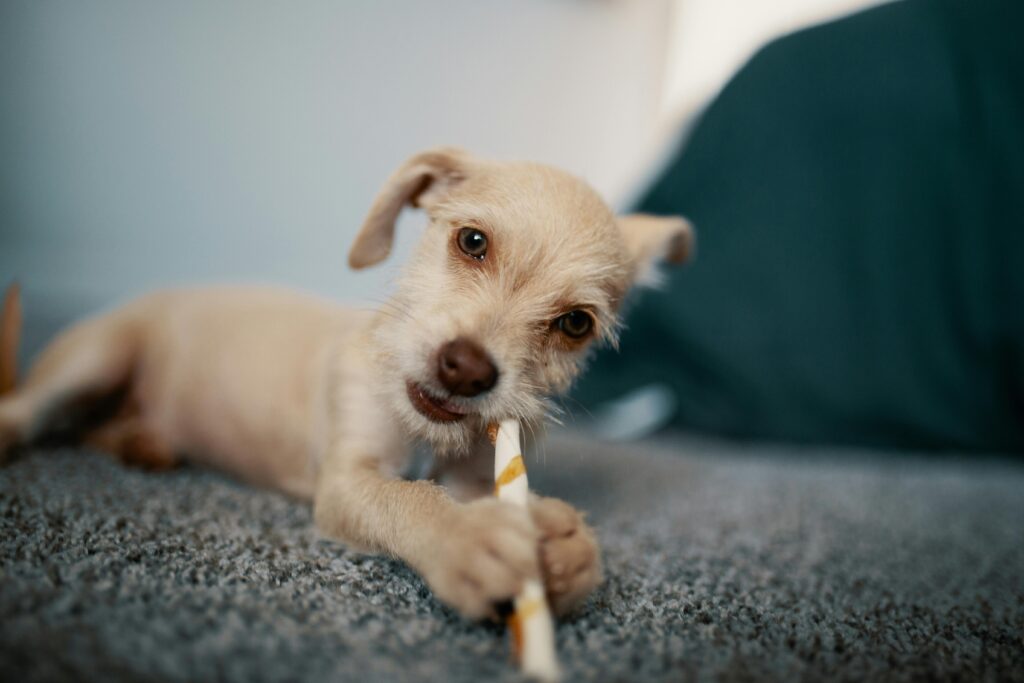Treatment Options for Worn Teeth in Dogs
Dental Cleaning and Polishing
We are all worried about the “dog with worn teeth.” One of the most basic but essential treatments for worn teeth in dogs is a professional dental cleaning and polishing. Just like humans, dogs benefit immensely from regular cleanings. These procedures are usually performed under anesthesia to allow the veterinarian full access to your dog’s teeth without causing distress or discomfort.
Dental cleaning helps remove tartar and plaque that exacerbate wear. Even if the teeth are already worn, removing these irritants prevents further degradation. Polishing the teeth afterward helps smooth out rough surfaces, which can reduce the likelihood of bacteria sticking to the enamel and causing further damage.
Many pet owners overlook the importance of dental maintenance until it’s too late. By the time you notice severe wear, some damage might already be irreversible. A thorough cleaning doesn’t just make your dog’s teeth look better—it can also help prevent gum disease and other oral complications. If your dog is older or has preexisting health conditions, your vet may do bloodwork beforehand to ensure it’s safe to proceed with anesthesia.
Tooth Bonding and Sealants
When a dog’s teeth are worn down but not entirely destroyed, your vet might recommend tooth bonding or sealants. This process is akin to what humans receive at the dentist. Using a special composite material, the vet fills in worn areas or seals vulnerable spots to protect against further damage.
Bonding can restore some of the lost structure of the tooth and reduce sensitivity. For dogs that are experiencing pain while eating or drinking cold water, this can be a game-changer. It’s particularly helpful if the wear hasn’t reached the pulp cavity yet. Once that inner portion of the tooth is exposed, more invasive procedures may be required.
Sealants serve a slightly different purpose. They’re often applied as a preventive measure once the teeth have been cleaned and polished. These invisible layers coat the tooth surface, making it harder for bacteria and acids to erode the enamel further. While not a permanent fix, they add a protective barrier that can delay further deterioration.
Root Canals and Tooth Extraction
In severe cases, where the tooth pulp is exposed or infected, a root canal may be necessary. This procedure involves removing the damaged pulp, disinfecting the area, and filling it with a material to prevent infection. While it may sound intense, root canals in dogs are fairly routine for veterinary dentists and can save a tooth that would otherwise need to be extracted.
On the other hand, if the tooth is too far gone—cracked, infected, or extremely worn—extraction may be the only viable option. Removing a tooth might seem drastic, but dogs typically adapt very well to the loss. Especially for back molars, which endure the most wear, extraction can relieve chronic pain and prevent infection from spreading to other areas.
Post-procedure care is essential. Dogs recovering from extractions or root canals need soft food, pain management, and sometimes antibiotics. Your vet will provide specific instructions tailored to your dog’s condition. It’s crucial to follow these guidelines to ensure proper healing and to avoid complications.
Preventing Worn Teeth in Dogs
Choosing the Right Chew Toys
Prevention always starts at home, and one of the most important ways to avoid worn teeth in your dog is by selecting appropriate chew toys. Dogs have an instinctual need to chew—it keeps them mentally stimulated and helps clean their teeth naturally. However, not all chew toys are created equal.
Avoid items that are too hard, like bones, hooves, or antlers. These may seem natural, but they can cause micro-fractures or rapid enamel wear. Instead, go for rubber-based or nylon toys that offer some give. The goal is to let your dog chew without placing too much stress on the teeth.
Supervision is key here. Even if you’ve bought a soft toy, make sure it doesn’t have any hard parts or small pieces that could break off and cause damage or a choking hazard. Consider rotating chew toys to keep your dog interested and reduce the wear on specific teeth from repeated chewing in the same area.
Diet and Dental Health
Your dog’s diet plays a surprisingly significant role in their dental health. Crunchy kibble is often touted as better for teeth because it helps scrape off plaque as your dog chews. While it’s not a substitute for brushing, it’s generally better than soft or wet foods that can cling to the teeth and gums.
Some commercial dog foods are even formulated specifically to promote dental health. These foods have larger kibble pieces or special coatings that help reduce tartar buildup. Raw food diets, although popular, require careful planning to avoid including hard bones that can cause wear.
Adding dental treats or water additives can also help, but nothing replaces consistent oral hygiene. A balanced diet rich in vitamins and minerals—especially calcium and phosphorus—is essential for maintaining strong, healthy teeth.
Regular Dental Checkups and At-Home Care
Just like people, dogs benefit greatly from regular dental checkups. These visits allow the vet to monitor wear, detect early signs of problems, and perform professional cleanings when needed. Aim for at least one dental exam per year, more frequently for senior dogs or breeds prone to dental issues like Yorkies or Dachshunds.
At home, brush your dog’s teeth several times a week using a dog-specific toothbrush and toothpaste. Human toothpaste contains ingredients that are toxic to dogs, so stick with vet-approved products. Start slow and reward your dog after each session to create a positive association with brushing.
Other tools like dental wipes, finger brushes, and dental chews can supplement brushing. Just remember, they should never replace it entirely. Consistent care keeps your dog’s mouth healthy and significantly reduces the chances of severe tooth wear.
Breeds More Prone to Worn Teeth
Brachycephalic Breeds (Short-Nosed Dogs)
Brachycephalic breeds like Bulldogs, Pugs, and Boston Terriers are often more susceptible to dental issues, including worn teeth. Their unique skull shape causes dental overcrowding, which leads to malocclusion (misalignment of teeth). This misalignment makes it easier for teeth to rub against each other unnaturally or against the jawbone, accelerating wear.
Additionally, the crowded nature of their mouths makes it harder to clean between teeth. Plaque and tartar can build up quickly, softening enamel and exacerbating wear. These breeds may also suffer from chronic dry mouth, which reduces the saliva needed to naturally wash away food particles and bacteria.
Owners of these breeds need to be extra diligent about dental hygiene. Regular checkups, soft chew toys, and a strict brushing regimen are crucial. Catching wear early in brachycephalic dogs can prevent costly and painful issues down the road.
Working and Herding Breeds
Dogs like German Shepherds, Border Collies, and Belgian Malinois are extremely active and often trained to bite or chew as part of their tasks. Whether it’s catching frisbees, tugging ropes, or chasing livestock, these dogs use their mouths constantly. The repetitive motion of biting and holding objects can cause gradual wear, especially on the canines and incisors.
Additionally, many of these breeds are naturally high-energy and prone to boredom. Without proper mental and physical stimulation, they may chew destructively, targeting everything from wood furniture to metal crates. All of these materials are much too hard for dog teeth and can lead to excessive wear or even fractures.
Providing plenty of exercise, training, and appropriate outlets for their energy can help minimize destructive chewing and reduce the risk of dental damage.
Toy Breeds and Small Dogs
Ironically, even though toy breeds don’t typically chew on hard objects as frequently as large dogs, they often suffer from more dental issues. This is largely due to the small size of their jaws, which leads to overcrowding and difficulty in cleaning between teeth. When plaque and tartar are left untreated, they wear down the enamel layer and contribute to dental decay and wear.
Small dogs are also more likely to be fed soft diets, which tend to cling to teeth and accelerate decay. Over time, this can erode the protective surfaces of the teeth, making them vulnerable to faster wear even with regular use.
Owners of toy breeds should prioritize dental cleanings and consider switching to dry food if appropriate. Specially formulated small-breed dental diets and tools like finger brushes can make a significant difference in preventing excessive tooth wear.
The Emotional and Physical Impact on Dogs
How Worn Teeth Affect Daily Life
It’s easy to underestimate the impact of dental wear on your dog’s overall well-being. Teeth play a major role in everything from eating to playtime to communication. When a dog suffers from worn or painful teeth, their entire lifestyle can be affected.
Chewing becomes difficult, which often leads to reduced appetite or selective eating. Your dog might start avoiding certain types of food, especially dry kibble or crunchy treats. This dietary change can then lead to nutritional imbalances if not addressed quickly.
Playfulness may also decrease. A dog with oral pain won’t enjoy tug-of-war or chasing balls like they used to. You might even notice subtle behavior changes—your normally energetic pup becoming lethargic or irritable. These signs shouldn’t be ignored; they’re your dog’s way of telling you something’s wrong.
Emotional Stress and Behavioral Changes
Chronic oral pain doesn’t just cause physical discomfort—it can take an emotional toll as well. Dogs in pain often show subtle changes in behavior before more obvious symptoms appear. This might include increased licking of lips, pawing at the mouth, or avoiding being touched around the face.
As the pain persists, dogs can become anxious, depressed, or even aggressive. A once-friendly dog might growl or snap if someone tries to examine their mouth. These behaviors are rooted in fear and pain, not defiance.
Understanding this emotional component is crucial. Dogs can’t tell us they’re in pain, so it’s our responsibility to observe, interpret, and act. The sooner you address the problem, the faster your dog can return to being their happy, tail-wagging self.
Enhancing Quality of Life Post-Treatment
Once treatment is completed—whether through cleaning, bonding, or extraction—you’ll likely see a noticeable improvement in your dog’s quality of life. Many owners report their dogs being more energetic, playful, and happy post-treatment. The pain they had adapted to is suddenly gone, and it shows in every tail wag and excited bark.
Recovery might take a few days to a few weeks, depending on the procedure. During this time, feeding soft food, managing pain with prescribed meds, and avoiding hard toys are essential. Be patient and supportive; your dog may need a little time to adjust.
Long-term, continue the dental care routine established during recovery. Preventing future issues is not just about maintenance—it’s about ensuring your dog lives a full, healthy, and pain-free life.
Myths and Misconceptions About Worn Teeth

“It’s Normal for Dogs to Have Bad Teeth”
One of the most damaging myths out there is the idea that dental issues are just “part of being a dog.” While some wear is natural as dogs age, severe or painful wear is not. Letting a dog suffer with damaged teeth just because “they’re old” or “they’re a dog” ignores the significant pain and complications involved.
Dogs are stoic animals. They hide pain well, so by the time symptoms are noticeable, the damage may be serious. Don’t fall for this myth—regular dental care is as vital for dogs as it is for humans.
“Chewing on Bones Keeps Teeth Clean”
While chewing does help reduce tartar, hard bones can do more harm than good. They may clean the surface temporarily, but at the cost of cracking or wearing down enamel. The risk of dental damage, not to mention gastrointestinal injuries from bone fragments, makes this a dangerous habit.
If you want to support your dog’s dental health through chewing, opt for vet-approved dental chews and rubber toys. They’re safer, more effective, and specifically designed for oral health.
“If My Dog’s Eating, Their Teeth Are Fine”
Just because a dog is eating doesn’t mean their mouth is pain-free. Dogs will often continue to eat through significant dental pain, just out of a survival instinct. But you may notice them avoiding one side of the mouth, chewing more slowly, or dropping food.
Pay attention to these subtle signs and don’t wait for a full appetite loss to take action. Being proactive could spare your dog a lot of pain and possibly save you from more expensive treatments down the line.
Creating a Long-Term Dental Care Plan
Setting Up a Routine Dental Schedule
Consistency is the key to maintaining your dog’s dental health over the long term. Just like with humans, sporadic dental care won’t cut it. You need a structured routine that includes regular at-home brushing, professional cleanings, and vet visits.
Start by establishing a brushing schedule. Aim for brushing your dog’s teeth at least three to four times a week. Daily brushing is ideal, especially for breeds prone to dental issues. Choose a quiet time when your dog is calm, and always use pet-safe toothpaste. Make brushing a positive experience by offering a treat or praise afterward.
Incorporate dental chews and toys into your dog’s playtime. Rotate these frequently to keep your dog engaged and ensure even wear across teeth. Additionally, schedule professional dental cleanings once a year. Senior dogs or those with known dental problems may need more frequent checkups.
Record each cleaning, brushing session, and vet visit. This log can be invaluable in spotting patterns, identifying issues early, and discussing any concerns with your vet. Long-term dental care is not just about preventing worn teeth—it’s about enhancing your dog’s overall quality of life.
Products That Promote Dental Health
There’s a vast array of dental products available for dogs, and choosing the right ones can be overwhelming. Look for products approved by the Veterinary Oral Health Council (VOHC), which means they’ve met specific standards for safety and effectiveness.
Here are some top categories of dental products to consider:
- Toothbrushes and Toothpastes: Use dog-specific toothbrushes—double-headed or finger brushes are great options. Never use human toothpaste; ingredients like xylitol are toxic to dogs.
- Dental Wipes: Ideal for dogs that resist brushing. These wipes can remove surface plaque and are a good backup for busy days.
- Dental Chews: These not only satisfy your dog’s urge to chew but also help reduce plaque buildup. Choose chews that are flexible but durable—avoid those that are too hard.
- Water Additives: These can be added to your dog’s water bowl to help reduce bacteria and freshen breath. While not a substitute for brushing, they’re a helpful supplement.
- Dental Gels and Sprays: Applied directly to the gums and teeth, these products help reduce bacteria and maintain oral hygiene between brushings.
Always read labels carefully and consult your vet before introducing new products into your dog’s routine. What works well for one breed or size may not be suitable for another.
Monitoring and Adjusting as Your Dog Ages
Your dog’s dental needs will change over time. Puppies require attention to ensure adult teeth grow in properly, while senior dogs need extra monitoring for signs of decay and wear. As your dog gets older, you may need to switch to softer foods or increase the frequency of professional cleanings.
Keep an eye out for behavior changes like reluctance to eat, excessive drooling, or pawing at the mouth. These could signal new or worsening dental issues. Remember, early intervention is the best way to avoid painful procedures and costly treatments later on.
Routine adjustments, such as changing their diet or switching to gentler chew toys, can make a huge difference. Keep communication open with your veterinarian, and don’t hesitate to bring up even minor concerns. A proactive approach can add years of comfort and happiness to your dog’s life.
Conclusion
Worn teeth in dogs may seem like a minor issue at first glance, but they can signal deeper problems and lead to serious health consequences if left untreated. Whether it’s caused by chewing on the wrong objects, age-related factors, or breed-specific traits, worn teeth require prompt attention and consistent care.
Thankfully, you have a range of tools and strategies at your disposal to manage, treat, and even prevent worn teeth. From choosing the right chew toys and dental products to scheduling regular cleanings and learning your dog’s behavior, you can play an active role in protecting their smile.
Your dog depends on you, not just for food and shelter but for overall well-being. Taking their dental health seriously is one of the most loving things you can do. Start building that dental care routine today, and your furry friend will thank you with every happy wag and contented chew.
FAQs
1. How can I tell if my dog’s teeth are worn down?
Look for flattened or smooth teeth, discoloration, sensitivity, and behavioral signs like avoiding hard foods or chewing on one side. If you notice any of these, consult your vet.
2. Is it okay to give dogs bones for chewing?
No. While dogs love bones, they can be too hard and cause teeth to fracture or wear down. Opt for softer, dog-safe chew toys and dental treats instead.
3. Can worn teeth grow back or repair themselves?
Unfortunately, no. Once tooth enamel is lost, it doesn’t regenerate. However, treatments like bonding or sealants can help protect and restore function.
4. How often should I brush my dog’s teeth?
Aim for at least three to four times a week. Daily brushing is ideal for maintaining strong and healthy teeth.
5. Are there specific foods that help prevent dental wear in dogs?
Yes. Dry kibble designed for dental health, along with approved dental treats, can help minimize plaque and tartar buildup. Avoid giving overly hard or sticky foods.
Please don’t forget to leave a review.




